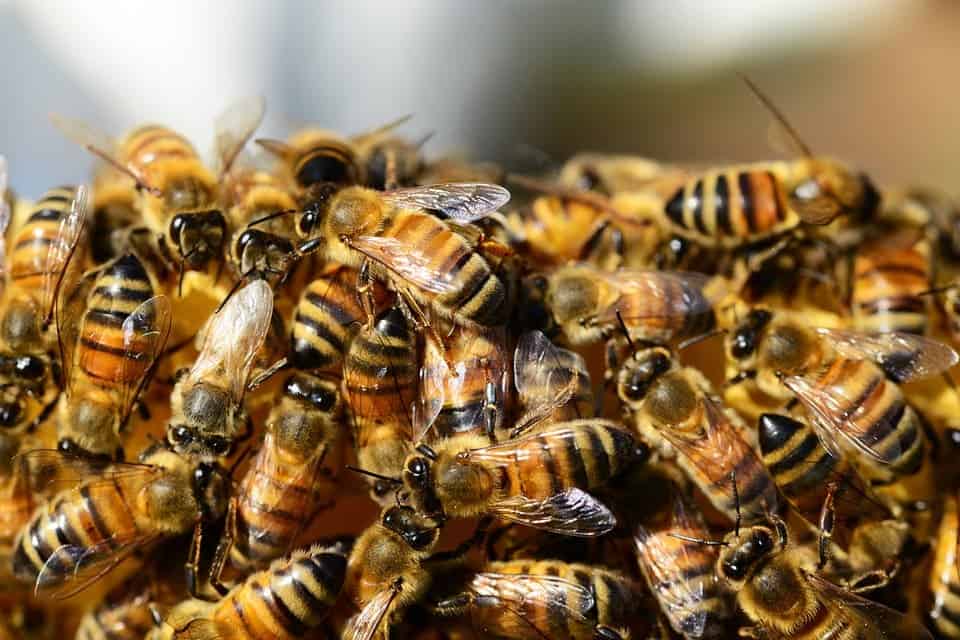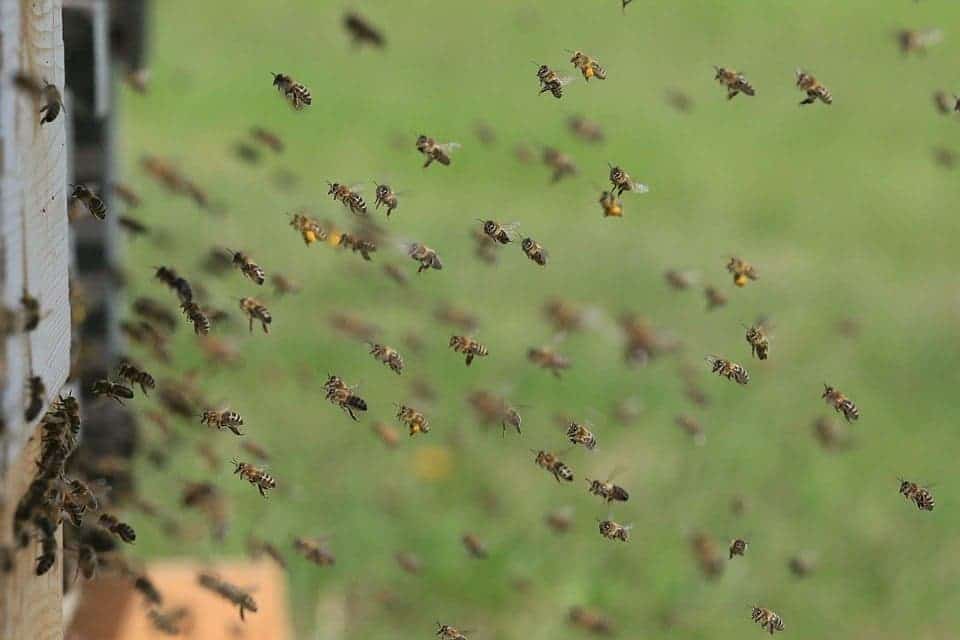New research has found that bees make an adorable sound when surprised — a whoop-like vibration response which was previously believed to mean “stop” in bee-talk.

Honeybees make a distinctive buzz that lets you know/terrifies you there’s one of the little critters flying around. But they can also use their wing muscles to produce pulses of vibration that are inaudible to humans — which they use to communicate.
But exactly what message it conveys is a matter or some debate. Researchers first proposed in the 1950s that this “whoop” sound was produced by hungry bees, as it was often followed by food exchanges. Later, evidence pointed to this sound as a kind of “stop” signal used by one bee to inhibit another’s waggle dance, possibly to warn against danger, such as a predator, lurking in a particular patch of flowers.
Whoop, whoop!
Martin Bencsik and his team from Nottingham Trent University’s School of Science and Technology, UK had a bee in their bonnet about this sound. So, they installed a host of accelerometers to monitor the vibrations inside two beehives (one in UK and the other in France) over the course of a year without disturbing the colony‘s behavior in any way. They filtered the data as to isolate this signal for analysis. Here’s what it sounds like, via New Scientist:
https://soundcloud.com/new-scientist/honeybee-whooping-signal
The team’s recordings showed that bees emit this sound much more often that we’d thought — and much more often than the previous explanations could account for. In some instances, the sound was recorded more than five times a minute in certain areas of the honeycomb — and bees don’t get that hungry, neither do they mosh-pit that hard. It also became more frequent at night and in bad weather, whereas waggle dances usually happen during mild days when bees are busy looking for forage patches.
“There’s no way a bee was trying to inhibit another one that frequently, and there’s no way a bee would request food that frequently” Bencsik said.
The researchers also found that they can make bees produce the sound by tapping on the hive’s wall. These observations suggested that the signal had another meaning than previously thought.
Bencsik’s team also placed special cameras inside the hive so they could monitor what was going on around the accelerometers. The footage revealed that most whoops coincided with bees bumping into the hive’s walls or into one another near the sensors, not only with waggle dances in progress or food exchanges.
This sound, they believe, is the sign of a startled bee.
Bumper bugs

“We suggest that, in the majority of instances, it is bees being startled that produce the signal,” Bencsik adds.
Honeybee hives are busy places, crammed full of insects repairing, dancing, flying to and from forage patches. In such confined conditions, there are a lot of things that can scare a bee — a nest-mate falling on it after an impact with the hive wall, for example. The team’s theory explains the large incidence of this particular vibration seen in hives. It also offers an explanation for previous results.
It’s possible that earlier studies attributed the source of the vibration to the wrong bees because of the commotion — it’s impossible to tell exactly which individual the sound is coming from in the hum-drum of the hive. When trying to stop a waggle dance, a honeybee will butt into the dancer — the vibration could come from the surprised dancing bee, and not its inhibitor. Exchange of food is also initiated by headbutting, so the buzz picked up during this behavior can also be explained by Bencsik’s team theory.
“Scientists in the past have explored this signal in artificial circumstances where they ensured that the bees under investigation would be trying to inhibit other bees,” Bencsik explained.
“In our study we have not manipulated our bees in any way, and this has revealed totally unexpected results, yielding new interpretations but also yet more mystery around this brief honeybee vibrational pulse. We believe that in only a small number of instances is it used as an inhibitory signal and therefore have proposed a new name – the ‘whooping signal’.”
This would also explain why the sound was picked up more often at night and in bad weather: with more bees confined to the hive, they had a much better chance of bumping into one another.
The team says their findings can help beekeepers better gauge a hive’s status, by measuring the whoops emitted in response to a standardized tap of the hive.
“It shows promise that our methods can be used as a sensitive way of monitoring and assessing colony status for these hugely important pollinators.”
“I would imagine an unstressed colony would have less of a response and a colony that’s very stressed would be very reactive to a small stimulus,” Bencsik concludes.
Bees have previously been shown to exhibit certain pseudo-emotions, such as optimism, suggesting there’s more going on in their heads than we’d suspected. So personally, I like to think that they’re just really polite and ‘whoop’ is their equivalent of “sorry ’bout that.” I’m a beeliver, if you will.
The full paper “Long-term trends in the honeybee ‘whooping signal’ revealed by automated detection” has been published in the journal PLOS One.


